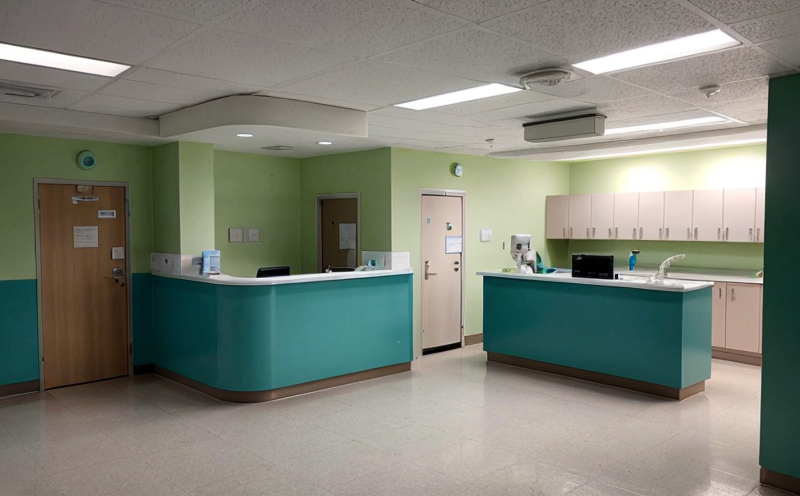ISO 21150 Detection of E. coli in Hospital Surfaces and Water
The ISO 21150 standard provides a robust methodology for detecting Escherichia coli (E. coli) on surfaces and in water within healthcare settings, ensuring that facilities meet stringent hygiene standards. This service is essential for maintaining a safe environment to prevent the spread of infectious diseases.
Our laboratory adheres strictly to ISO 21150 guidelines, which mandate the use of appropriate sampling techniques, incubation conditions, and detection methods to accurately identify E. coli in hospital surfaces and water. The standard specifies that samples must be collected using a standardized cotton swab or similar material, followed by transfer into an appropriate enrichment broth for growth.
The recovery and identification process involves several critical steps, including:
- Sampling: Collecting swabs from various surfaces such as door handles, bed rails, and sinks in patient areas.
- Enrichment: Incubating the samples at 36°C ± 1°C for 24 hours to allow any E. coli present to grow.
- Detection: Using chromogenic media or other methods specified by ISO 21150 to differentiate between E. coli and other coliform bacteria.
- Confirmation: Confirming the identity of positive colonies using biochemical tests or molecular techniques as necessary.
The use of this standard is crucial for healthcare facilities, as it ensures consistent and reliable results across different laboratories. This consistency allows hospital management to make informed decisions about cleaning protocols and disinfection strategies, ultimately contributing to improved patient safety and well-being.
Our laboratory uses advanced instrumentation such as PCR machines and automated colony counters to ensure precision and repeatability in our testing procedures. We also employ trained microbiologists who are experts in handling potentially hazardous samples safely and effectively.
The importance of this service cannot be overstated, especially given the increasing prevalence of multi-drug resistant organisms (MDROs) like extended-spectrum beta-lactamase (ESBL)-producing E. coli strains. By adhering to ISO 21150 standards, we help healthcare providers maintain a clean and hygienic environment that minimizes the risk of nosocomial infections.
In addition to ensuring compliance with regulatory requirements, this service plays a vital role in supporting research initiatives aimed at identifying emerging pathogens. Our team works closely with clients to tailor testing protocols based on specific project needs, whether it’s for routine monitoring or investigating outbreaks.
Eurolab Advantages
- Expertise: Our highly skilled microbiologists and technicians have extensive experience in performing ISO 21150-compliant tests.
- State-of-the-Art Facilities: Equipped with the latest equipment, including PCR machines and automated colony counters, ensuring accurate results.
- Comprehensive Reporting: Detailed reports accompany every test result, providing actionable insights for facility management.
- Fast Turnaround Times: Our efficient workflow allows us to deliver results quickly, supporting timely decision-making processes.
Customer Impact and Satisfaction
By partnering with Eurolab for ISO 21150-compliant E. coli detection services, healthcare facilities can significantly enhance their ability to maintain high standards of hygiene. This leads directly to improved patient outcomes and reduced risk of infection.
- Enhanced Patient Safety: Accurate detection helps identify potential sources of contamination early on, allowing for prompt corrective actions.
- Compliance Assurance: Adherence to international standards ensures that facilities meet legal and regulatory requirements.
- Confidence in Data: Reliable test results provide confidence in the cleanliness and safety of hospital environments.
Use Cases and Application Examples
This service finds application in various aspects of healthcare operations, including:
- New Facility Construction: Initial testing to establish a baseline for cleanliness before occupancy.
- Ongoing Monitoring: Regular sampling and analysis to track trends over time.
- Outbreak Investigations: Targeted testing to identify specific sources of contamination during outbreaks.





